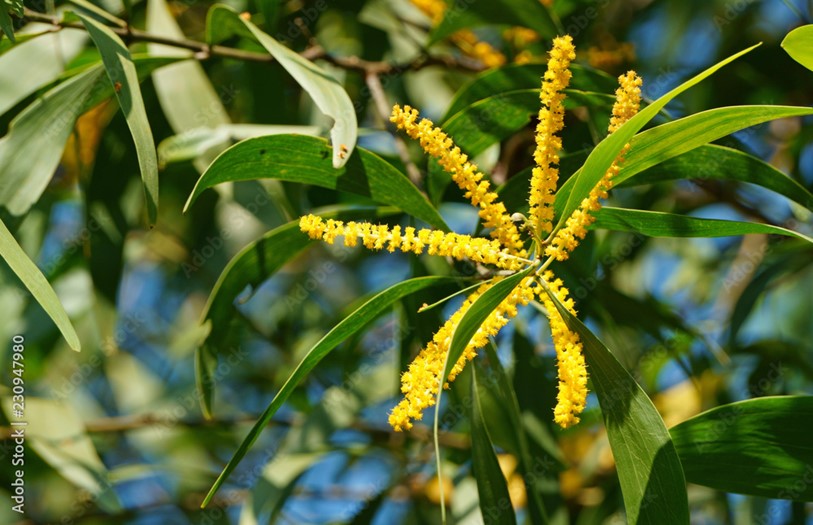Nearly 24.5% of India’s total land area is under forest and tree cover according India State of Forest Report (ISFR 2019) which is a biennial report published by the Forest Survey of India (FSI).
Our lives are intertwined with forests on an intimate level. We depend on forests and ecosystems for the services they offer unconditionally such as pollination, carbon sequestration, temperature regulation, pollution control and so on. Then a question arises. How much are we giving back? The ever expanding human population is always demanding for more and more resources. Forests are cleared all over the world for several reasons such as agricultural expansion, wood extraction, industrialization and urbanization. Between 2015 and 2020, the rate of deforestation worldwide was estimated at 10 million hectares per year (as big as the country of Iceland!). There is still a long road ahead of us. The goal set by the National Forest Policy, 1988 to increase forest cover is 33% from present and it has been estimated to take another decade to reach this milestone.
What is meant by forest cover?
From an ecological point of view, a forest is a dynamic complex of plant, animal and micro-organism communities and their abiotic environment interacting as a functional unit, where trees is a key component of the system. According to the report published by FSI, “forest cover” includes all tree patches which have canopy density more than 10 % and area of one hectare or more in size, irrespective of their legal status and species composition. The term “Recorded Forest Area” (RFA) is used for lands which have been notified as “forest” under any government Act or rules or recorded as “forest” in the government records. However, the FSI does not consider the types of forest nor does it take forest fragmentation and degradation into account. Areas that are plantations could also be included in the ISFR report as forest cover. An increasing forest cover might appear as good news but we have to keep in mind that it does not take the species composition or ecological significance into account.
Agroforestry as a tool for increasing forest cover
The Government of India launched National Agroforestry Policy in 2014 to encourage tree growing on farms. This ambitious plan aims to act like a bridge between various programs, schemes and agencies containing agroforestry elements in order to enhance the productivity, income and livelihoods of farmers. The policy also helps meet the increasing demand for products such as timber, food, fuel, and protecting the environment and natural forests.
Agroforestry can dampen the effects of climate change through microclimate moderation and the conservation of natural resources. In the longer term, agroforestry helps increase the resilience of the landscape, and retain the flow of ecosystem services.
For the purpose of agroforestry, exotic tree species were also introduced to contribute to the success of the plantation programs. The species of trees growing in an area which is different than their natural habitat or where they do not naturally occur are termed as ‘Exotic’. Exotic tree species grow faster than their indigenous counterpart. They can also be more profitable than native tree plantations in terms of timber. The exotic species like Eucalyptus species are fast growing and were introduced for paper and pulp production as well as oil production. Poplar and Prosopis juliflora were mostly planted for curbing desertification. These trees are also grown in commercial purpose for their high market value. These species are more dominant in comparison to the native species, as they easily acclimatize to the environment.
Exotic species – The Impact
Growing exotic species is like walking on egg shells. Several of them turn out to be invasive and interfere with the delicate balance of ecosystems. Since these plants easily acclimatize with their surroundings, they spread like wild fire. Soon enough, we have higher population of exotic plants than native ones in our forests. This causes a cascade of changes where the organisms which are dependent on these native plants are adversely affected.
The roots of these plants may exhibit allelopathy. Allelopathy is a phenomenon in which plant roots release certain biochemical which inhibits the growth and germination of other species around it.
The use of exotic species could also introduce new pests and diseases which can affect native species e.g. pink disease of Eucalyptus grandis. They can also promote hazards like forest fire. Plant invasions dramatically affect the distribution, abundance and reproduction of many native species. Let’s take a look at the issues caused by some of the popular exotic plants –

Eucalyptus:
Originally from Australia, Eucalyptus species are very fast growing. They were planted for pulp and paper industry as well as for oil production which has medicinal properties. Growing it in areas with low rainfall may cause heavy competition with other species for water as it tends to exhaust the ground water table and increase the incidence of allelopathy.

| Prosopis juliflora:It shows high level of water consumption which can lower the ground water table. It forms impenetrable thickets with its thorns and low branches which prevent cattle from accessing watering holes. It also takes over pastoral grasslands and uses scarce water. Livestock which consume excessive amounts of seed pods are poisoned due to neurotoxic alkaloids. Native to South America. |

| Lantana camara:It was popularly grown for attracting butterflies and for beautification of gardens but has now spread throughout the forests and forms a dominant part of the undergrowth. Its roots exhibit allelopathy which inhibits the growth of other plants around it. The origin of this plant can be traced to American tropics. |

| Acacia auriculiformis:Another Australian native, this tree is widely grown for its fast growth rate and use of wood pulp in paper industry. It exhibits low water and fertilizer requirements which make it an extremely invasive species if not managed properly. |

Leucaena leucocephala:
Commonly used for reforestation purposes, this tree produces leaves and seeds which contain an amino acid called Mimosine which can be toxic to other plants around it. This makes the plant highly invasive. It is native to American tropics.
Case Study – Betla National Park
Betla National Park is one of India’s first nine tiger reserves established under Project Tiger. It is located in the western part of the Chhota nagpur Plateau and spans an area of 1129.93 sq. km. It comprises of Palamau Wildlife Sanctuary and is spread over Latehar, Palamau and Garhwa districts in Jharkhand. For the study, 140 local individuals were questioned regarding their awareness and perception of Invasive Exotic species. 21 sampling plots of various sized quadrats were also used. Data was collected from community consultations, individual interviews, field observations, and literature review and group discussions. Data analysis revealed the presence of 14 invasive plant species, out of which, Lantana camara and Parthenium hysterophorus were the most common. It was observed that Parthenium hysterophorus had replaced the native palatable grass species such as Imperata cylindrica. This resulted in shortage of food of the herbivores as well as livestock. Many locals avoid grazing their livestock due to absence of palatable grasses. Spread of exotic plant species also results in loss of food sources as well as traditional medicines. They also decrease the value of land of the local land owners and cause spread of diseases and allergies which might not have been present previously, for example, allergies caused by pollen of Prosopis juliflora.
Case Study – Nilgiris
The Nilgiris District consists of some of the oldest mountain ranges of the Western Ghats. Located at the tri-junction of Tamil Nadu, Kerala and Karnataka, the mountain range derives its name (Nil = blue, Giri = mountain) from the mass flowering of Strobilanthes kunthiana known commonly as the ‘Neelakurinji’ which paints the hillsides in varying shades of blue and purple once every 12 years. These mountains are also known for the ‘Shola Forests’ which are small patches of forest present in the valleys between the mountains. The native flora of Nilgiris includes almost 30 species of Strobilanthes plants and animals such as Nilgiri Tahr and Gaur make these forests and grasslands their home. These forests are now ravaged by the spread of invasive alien species such as Cestrum aurantiacum and Lantana camara which out-compete the native plants for resources and space. Tree species such as Prosopis juliflora and Eucalyptus were planted decades ago to aid the rural population with timber and commercial products such as tannins. These trees are also invasive and degrade the soil quality and deplete groundwater wherever they grow. Spread of these plants is causing shortage of food for the local herbivore fauna such as Nilgiri Tahr and Gaur who stray into areas around human habitation in search of palatable vegetation. Removal of these invasive plants is being carried out in the Reserve Forests of the Nilgiris and Kodaikanal, although the process might take years as these plants have been present since decades.
So what can we do?
Although not easy to do, there are a few things we can do on an individual level to prevent or mitigate the spread of alien exotic species:
Know what you are buying- Exotic plants tent to be more colorful and flashy compared to the native ones. Therefore they are sold on a large scale to clueless citizens by nurseries. Studying the origin of the plants found in the nearby nursery and learning to identify which plant is native and exotic goes a long way to prevent the spread.
Removal- Removal of exotic weeds before flowering/ fruiting and burning them at the site. Burning is necessary to completely remove the plant material so that it cannot germinate in any manner to produce new roots and shoots. These areas should be replaced with fast growing native species.
Clean yourself- Seeds and vegetative material of the exotic plants may hitchhike on our equipment, clothes, vehicles or body when we travel to an infested area. To prevent their spread into an untouched place, it is recommended to clean your shoes, vehicle tires and equipment off of any clinging seed or plant material.
Problematic release- Do not release exotic plants by growing them into an area with natural habitat. Do thorough research about the plant species and understand the commitment before getting it. This also includes release of aquatic plants from aquarium into any natural water way.
Awareness- Talk and discuss with fellow plant enthusiasts about native and exotic plants to spread awareness about the issue. The more people who watch what they buy the better.
GIS – An aid to map Exotic species
Geographic Information System (GIS) and remote sensing can be used to map areas infested by invasive plants. The location of the plants can be stored in the form of latitude and longitude coordinates which can provide precise location of their presence. Some of the techniques that can be used include NDVI, Hyper spectral remote sensing, UAV and MaxEnt. More information about the techniques can be found here.
Terracon Ecotech Pvt. Ltd. is India’s first ecology-based environmental consultancy which puts emphasis on Nature-based Solutions (NbS). The company has been involved in tree inventorisation and biodiversity assessments with the help of GIS and hence, similar principles can be used to study the spread of invasive exotic plant species so that appropriate actions can be taken to control their spread.
Conclusion
To avoid the damage to biodiversity, it is necessary for thorough study to be conducted about the plant species that are being used for plantations. As far as possible, exotic species should be avoided and native species should always be preferred since they have a much better ability to adapt with the local environment and can integrate themselves into the ecosystem. Removal of invasive species is not just labor intensive but also needs substantial amount of funds and has to be carried out in phases where the removed trees or plants should be replaced with the native ones. Therefore, it is much better to simply avoid the temptation to go for the exotic option when it comes to plants.
Gauri Joshi
Jr. Analyst – Biodiversity
References
Invasive plant species in forest and non-forest areas of Jharkhand
Aliens: The Invasive Species Bulletin




